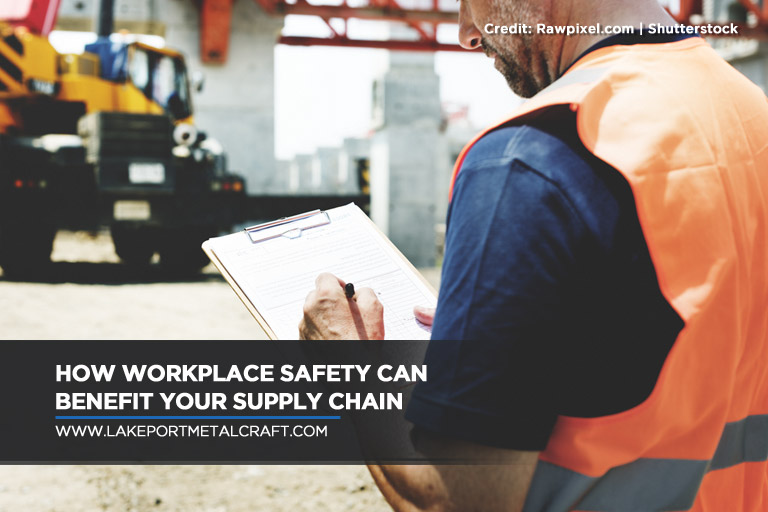Safety has always been a top priority for companies belonging to the supply chain industry. Whether your company is in Ontario or anywhere else in the world, workplace health and safety should always be a priority. Moreover, there’s always an opportunity to improve your organization’s ability to safeguard the well-being of workers.
General Workplace Safety Tips
Here are some practical workplace safety tips and how your establishment can benefit from them:

Keep your workers healthy with less dust, mould, and debris
Plastic items offer benefits such as preventing employee contact with mould, debris, and dust. Their hygienic design allows for allergen management and proper cleaning. Plastic pallets are non-porous so they can’t absorb moisture, mould, or odour and don’t have hollow areas that collect water. This also helps lessen the instances of allergic reactions among your employees. An estimated 15 million Canadians have food allergies, and every year, allergens cost companies $30 million as they are sued, fined, or shut down due to contact with allergic employees and customers.
Prevent exposure to sharp and loose objects through durable packaging
Opt for packaging with a smooth design that’s free of loose boards and staples, and protruding nails that are typical with alternative pallets. This helps reduce the risk of employee exposure to loose or sharp objects. Additionally, their texture reduces the risk usually associated with wood pallets, such as splinters and cuts, and allows safer stacking. Since plastic pallets don’t break easily, they also prevent any broken and unsafe wood pieces from falling on the floor.
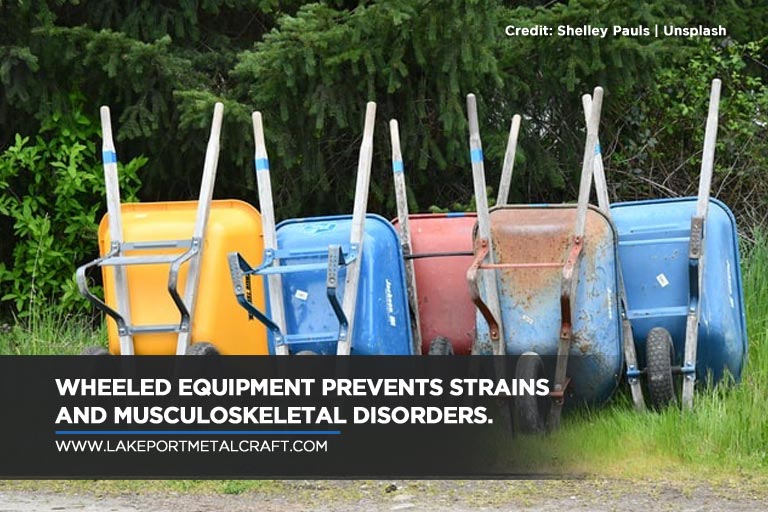
Equip your employees with ergonomic tools to reduce injuries
The evolving workforce and increasing worker’s compensation and health care costs call for ergonomically designed tools that enhance your workers’ safety. Choose ergonomic products such as collapsible containers and wheeled equipment that prevent strains and musculoskeletal disorders. It could result in fewer accidents because they promote easier handling, better material tracking and locating, and improved stackability.
Minimize risk with innovative materials
It’s hard to predict what a unit load will interact with throughout a supply chain, and pallet material innovations are protecting businesses against potential risks. The reusable plastic pallets, infused with flame-retardant, X-ray, and metal detectable additives are some of the new materials that have been created to lessen risks.
-
- Fire-retardant pallets – Various fire-retardant plastic materials are compliant with the Canadian Food Inspection Agency (CFIA). These materials are used in making fire-retardant pallets that meet fire rating requirements equivalent to wood pallets used in food processing plants.
- X-ray and metal detectable – Some plastic pallets contain metal-detectable additives that allow foreign objects to be detected before they make their way into the finished product. This feature is not found in wood pallets. Like the metal-detectable additives, items with X-ray detectable substances use barium sulphate as a means of detection.
- Forklift safety – The forklift is one of the pillars of manufacturing and warehouse businesses. However, forklift drivers are among the most vulnerable to accidents. Ensuring forklift safety is a must to preserve the efficiency of your supply chain line as well as the well-being of your drivers.
The Importance of Forklift Safety
A forklift is one of the most commonly used equipment in supply chain operations. These powerful trucks can lift and transport cargo with precision and speed. Forklifts might be powerful, yet there’s risk involved in operating these industrial machines. More than a million forklifts are estimated to be in operation, which makes it vital to ensure workers are trained on work safety measures. Studies show that forklift accidents cause roughly 80 fatal accidents and 35,000 serious injuries every year. Moreover, 25 % of these accidents resulted from a lack of training which proves the importance of educating operators on the essential rules of workplace safety. So, let’s go over some of the most vital forklift safety tips:
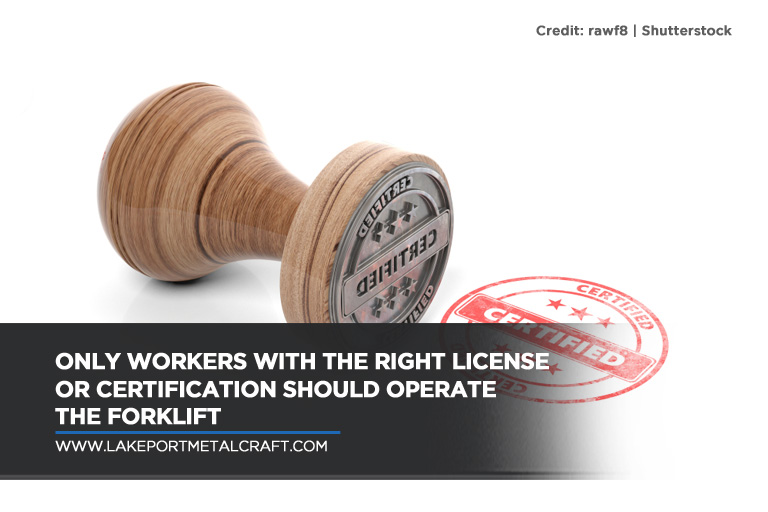
- Get Certified
Since numerous accidents occur due to poor training, it’s highly recommended that only those people who are trained and licensed are allowed to operate the forklift. You must evaluate your staff’s performance at least once every 3 years and provide them with videos, software training, lectures, and demonstrations.
- Know the Forklift Classification
There are various forklift truck types and classifications. Each type has its own weight limit, structure, travelling speed, usage, and turning radius. That’s why it’s critical to know your equipment and to follow the best safety practices.

- Wear Appropriate Clothing
Forklift drivers must always wear the required safety equipment, including hard hats, high-visibility jackets, and safety shoes. Remember to tuck away loose clothing to prevent it from getting caught on the truck.
- Always Maintain 360° Visibility
Keep the forks low to the ground to achieve a clear forward visibility. Should the load restrict the visibility, then operate the forklift in reverse. Make sure that you have a good view of the rack when positioning the load. Additional best practices include:
-
- Using the rear-view mirrors to boost visibility
- Looking in the direction of travel
- Using the headlights if working at night, outdoors, or in areas where additional lighting is required
- Making eye contact with the pedestrians and other workers

- Daily Inspection of Equipment
Forklift trucks must be carefully inspected before every use. Conduct daily checks with the shift supervisor to determine and log any defects or problems. Any equipment requiring repair must never be used. These are some of the recommended checks:
-
- Check the mast and the overhead guard for damage
- Check for oil, water, or radiator leaks
- Look out for potential hazards
- Make sure the forks are in good working condition
- Test operate the controls such as lights, brakes, horn, and steering wheel
- Inspect the tire pressure and fluid levels (fuel, engine, coolant, brake, and hydraulic)
- Pay Close Attention to the Forklift’s Stability
Before operating the forklift truck, make sure that your shoes and hands are dry and sit in a comfortable position with all the controls within your reach. Each forklift has a center of gravity (the point where the weight has equal concentration) that it shares with a load it carries. Take note that the heavier the load, the further out the center of gravity is from the load center, lessening your truck’s lifting capacity.
- Maintain Your Equipment’s Capacity
Know the capacity of your forklift and the attachments being used. Avoid lifting weight that surpasses the counterweight of the forklift truck. When you overload a forklift, it causes the rear wheels to rise and the entire truck to fall over, causing injury to people and damaging materials and equipment.
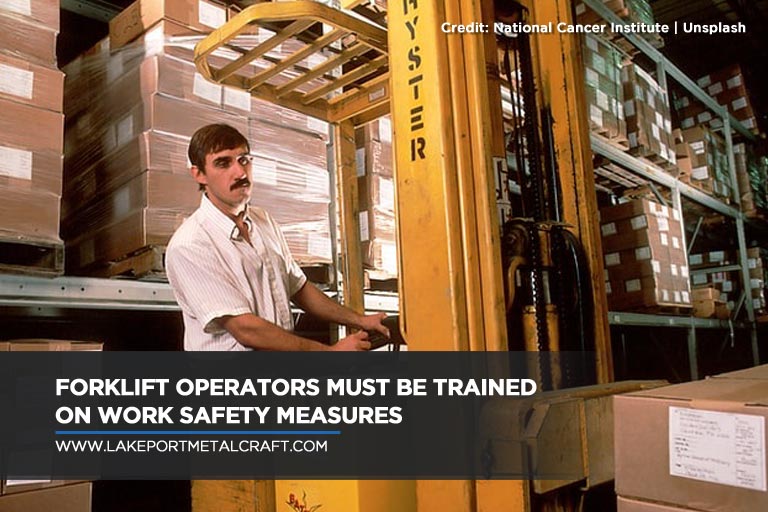
- Use a Floor Marking System
A floor marking system may help enhance worker safety. You can use yellow to mark physical hazards, like the areas prone to stumbling and falling, and red to represent fire equipment, fire hazards, and emergency controls. Place signs and wayfinders all over the site to keep people away from forklift truck paths, lead the trucks along safe routes, and improve the overall traffic flow.
- Ensure Loads are Secure and Stable
Be sure to check for balance when placing loads on the loading dock. You must travel with the load tilted backward and keep the forks as low as possible to enhance the equipment’s stability, especially when using ramps. Use bindings or rocks to secure heavy loads and stacks when required and make sure any skids or pallets used are the correct weight for your load.
- Move at the Right Speed
Drive the forklift within the designated speed limits. It’s critical to not turn, stop, change directions suddenly, or move fast when making a sharp turn, since these actions may cause the truck to tip over. If the forklift starts to dip, then stay put and don’t try to jump. Instead, stay in the truck, grip the wheel, and brace your feet.
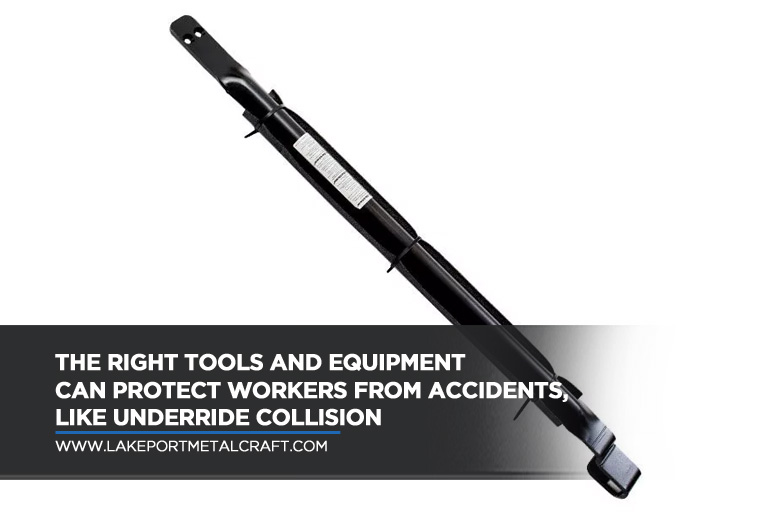
- Install a Forklift Rearguard to Prevent Underride Collisions
Underride collisions can lead to severe injuries (to the head, neck, ribs, and spine) and even death on the manufacturing floor. To protect forklift drivers from mishaps due to rear-end collisions, Lakeport Metalcraft has developed The Backbone, which is a metal safety component attached to the back of the forklift truck.
While following all worksite signs and regulations can prevent accidents and injuries, you should still prepare for the worst. Installing The Backbone on your standup forklifts and reach trucks supports all the other safety measures you’ve established.
Contact Lakeport Metalcraft Inc. at (416) 587-5809 for inquiries regarding The Backbone. Let us help you protect your forklift operators.

